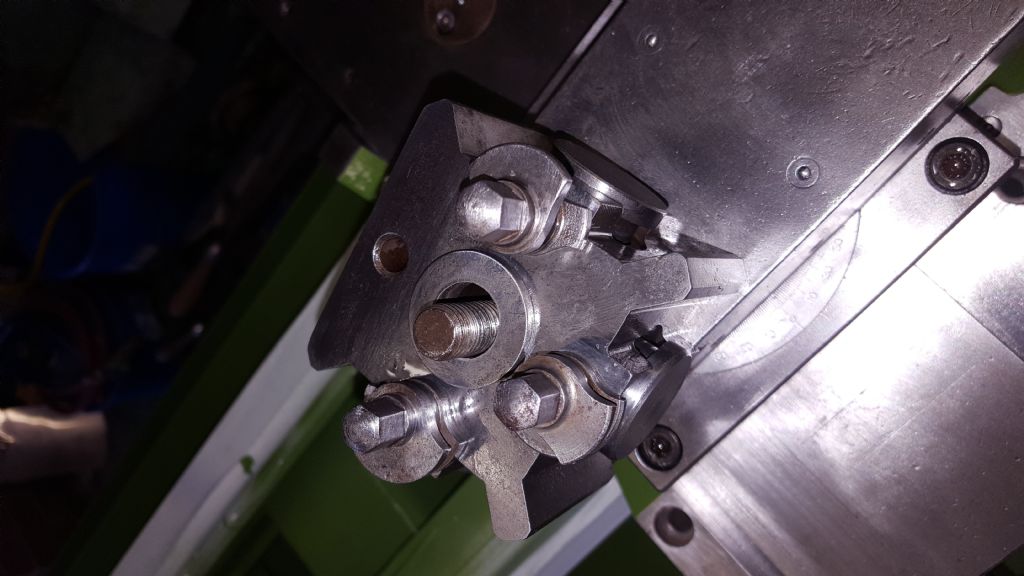There are good, albeit somewhat arcane, engineering reasons why its correct to have the tool post bore rather larger than the stud diameter with a short, top hat style, bush to both span the difference and apply clamping pressure. Its also correct to have a large diameter annular relief in the centre of the tool post base rather than making it flat. Typically the diameter of said relief is around half the length of the block sides.
Probably the most obvious example of why this arrangement is a good idea is to consider fitting the post to an elderly machine whose stud is no longer completely straight and slide top no longer perfectly flat. On smaller machines it doesn't take much more than occasional careless over-tightening to pull the top slide surface up a little where the stud threads in. Due to the relatively coarse threads involved such pulling will almost certainly shift the stud out of perpendicular too. Relatively small studs are easily bent a bit too.
Clearly if the tool post is bored a close fit on the stud and its base made dead flat it becomes very hard to get a firm, rotation free, seating of the tool post. Resistance to rotation being very important with a QC system because not only do all the loads feed to the slide via the post but also the tool tip is considerably offset from the post centre line so has considerable leverage. With the oversize bore and adapter bush at the top small deviations from perpendicular or small bends in the stud will tend to be pulled out when the nut is tightened down. Obviously the securing force will not be quite as great or evenly distributed as it will with a perfectly perpendicular and perfectly straight stud but small deviations can be accommodated in an adequately satisfactory manner.
Similarly a flat bottomed tool post on a distorted or damaged surface may only have proper contact over a relatively narrow annulus surrounding the stud. Not good for resisting rotation as the contact area will be small and the tool leverage large. With the relieved base not only is the contact area much larger, even if the actual width is no greater than before, but its a lot closer to the tool tip correspondingly reducing the leverage. Even if the actual mounting surface on the slide is a little uneven, so not all of the available surface on the base to the tool post is actually in proper contact, the actual holding area will almost certainly still be much greater than with the flat base contacting only around the stud.
Many folk, myself included, consider a thin washer of stiff card or aluminium alloy underneath the tool post gives a useful improvement in grip and allows a lower torque to be used on the mounting nut. Need a new washer every couple of years but thats no great issue. On some of the smaller machines high torque on a QC tool post mounting stud can distort the slide enough to impede its operation. Not enough to lock things up but can certainly destroy the nice even feel so important for precise work.
Clive.
Edited By Clive Foster on 12/07/2017 14:32:33
damian.







